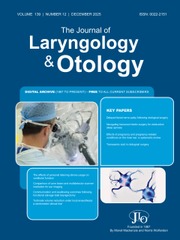No CrossRef data available.
Article contents
Vasodilator-Antihistamine Therapy and Tinnitus Control
Published online by Cambridge University Press: 27 March 2025
Extract
The purpose of this paper is to report on the clinical experience gained with the use of antihistamine; vasodilator medication—alone and/or in combin- ation in an attempt to control SIT (subjective idiopathic tinnitus). The report is based on 172 consecutive clinical cases seen for the chief complaint of SIT. This report is not a controlled study; however, it is presented to give a clinical impression of the response of the patient to such management based on our case series. Whenever tinnitus is mentioned, we refer to SIT (subjective idiopathic tinnitus).
- Type
- Session IV—Treatment (Moderator: Jack L. Pulec)
- Information
- The Journal of Laryngology & Otology , Volume 95 , Issue S4: Proceedings of the First International Tinnitus Seminar (New York, 8-9 June, 1979) , September 1981 , pp. 121 - 129
- Copyright
- Copyright © JLO (1984) Limited 1981


